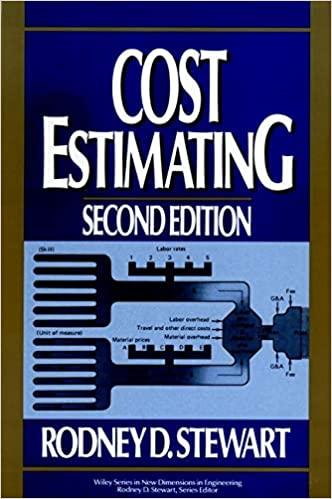Question
Direct Method: Rowe Publishing Company Statement of Cash Flows For the Year Ended December 31, 2013 Cash flow operating activities: Cash collected from customer $
Direct Method:
| Rowe Publishing Company Statement of Cash Flows For the Year Ended December 31, 2013 | ||
|---|---|---|
| Cash flow operating activities: | ||
| Cash collected from customer | $ 1,042,000 | |
| Cash paid to suppliers | (586,000) | |
| Cash payments to employees | (347,000) | |
| Cash payments for interest | (16,000) | |
| Paid income taxes | (29,000) | |
| Net cash provided by operating activities | $ 64,000 | |
| Cash flows from investing activities: | ||
| Equipment purchase | $ 25,000 | |
| Net cash used for investing activities | (25,000) | |
| Cash flows from investing activities: | ||
| Repayment of notes payable | $ (35,000) | |
| Proceeds from issuance of bonds payable | 50,000 | |
| Payment of dividends | (35,000) | |
| Net cash used for financing activities | (20,000) | |
| Net increase (decrease) in cash | $ 19,000 | |
| Cash, 12/31/2012 | 66,000 | |
| Cash, 12/31/2013 | $ 85,000
| |
Indirect method:
| Rowe Publishing Company Statement of Cash Flows For the Year Ended December 31, 2013 | |||
|---|---|---|---|
| Cash flows from operating activities: | |||
| Net income | $69,000 | ||
| Adjustments to reconcile net income to net cash flow from operating activities: | |||
| Depreciation expense | $ 15,000 | ||
| Increase in accounts receivable | (9,000) | ||
| Increase in inventory | (20,000) | ||
| Increase in accounts payable | 12,000 | ||
| Increase in salaries payable | 4,000 | ||
| Decrease in income taxes payable | (7,000) | (5,000) | |
| Net cash provided by operating activities | $ 64,000 | ||
| Cash flows from investing activities: | |||
| Equipment purchase | ($ 25,000) | ||
| Net cash used for investing activities | (25,000) | ||
| Cash flows from financing activities: | |||
| Repayment of notes payable | ($ 35,000) | ||
| Proceeds from issuance of bonds payable | 50,000 | ||
| Payment of dividends | (35,000) | ||
| Net cash used for financing activities | (20,000) | ||
| Net increase (decrease) in cash | $ 19,000 | ||
| Cash, January 1, 2013 | 66,000 | ||
| Cash, December 31, 2013 | $ 85,000 | ||
The balance sheets for Byron Manufacturing at December 31, 2012 and 2013 are shown:
| Byron Manufacturing Balance Sheets As of December 31, 2013 and 2012 | ||
|---|---|---|
| Assets | 2013 | 2012 |
| Current assets: | ||
| Cash | 5,430 | 9,400 |
| Accounts receivable | 10,650 | 8,990 |
| Inventory | 19,800 | 18,700 |
| Total current assets | 35,880 | 37,090 |
| Property, plant, and equipment | ||
| Building | 499,000 | 499,000 |
| Equipment | 276,000 | 272,100 |
| 775,000 | 771,100 | |
| Accumulated depreciation | (148,850) | (119,100) |
| Net property, plant, and equipment | 626,150 | 652,000 |
| Total assets | 662,030 | 689,090 |
| Liabilities and Equity | ||
| Current liabilities: | ||
| Accounts payable | 55,470 | 36,300 |
| Salaries payable | 9,660 | 11,900 |
| Income taxes payable | 1,020 | 9,930 |
| Total current liabilities | 66,150 | 58,130 |
| Long-term liabilities: | ||
| Bonds payable | 355,000 | 395,000 |
| Equity: | ||
| Common stock | 182,000 | 145,000 |
| Retained earnings | 58,880 | 90,960 |
| Total equity | 240,880 | 235,960 |
| Total liabilities and equity | 662,030 | 689,090 |
Additional Information needed to prepare the Statement of Cash Flows:
Net income was $2,620
Byron paid $34,700 in cash dividends
Byron issued $46,980 in bonds payable for cash
Byron retired $86,980 in bonds with cash
No fixed assets were sold or disposed of during the period
Fill in the table below to prepare the Statement of Cash Flows for Byron Manufacturing. The beginning balance column is taken from the 2012 Balance Sheet and the ending balance column is taken from the 2013 Balance Sheet. The Increase/Decrease columns represent the change in the accounts and will be debits or credits depending on the normal balance in the accounts. Most accounts will have either a debit or a credit. Accounts used in the non-operating sections of the Statement of Cash Flows are analyzed in more detail. Bonds Payable will show an increase and a decrease for the bond issue and retirement and Retained Earnings will increase with net income and decrease for cash dividends paid. The increases and decreases in the balance sheet accounts are increases and decreases in cash depending on the nature of the account. Follow the letters to see how the increase or decrease affects cash on the statement of cash flows. Click here for help with how changes in balance sheet accounts affect cash.
If an amount box does not require an entry, leave it blank or enter "0".


Step by Step Solution
There are 3 Steps involved in it
Step: 1

Get Instant Access to Expert-Tailored Solutions
See step-by-step solutions with expert insights and AI powered tools for academic success
Step: 2

Step: 3

Ace Your Homework with AI
Get the answers you need in no time with our AI-driven, step-by-step assistance
Get Started


